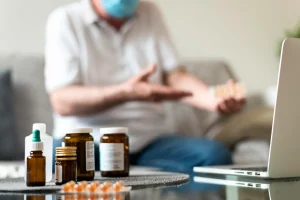Challenges to Developing and Sustaining a Program Using Pocket-Sized Medical Tools

Surgery, Equipment, Human Hand, Medicine, Hospital, Metal, Steel,
Using pocket-sized medical tools, such as portable ultrasound, for hands-on training can be a useful tool for medical practitioners. However, costs related to US equipment may present challenges to developing and maintaining a successful program.
Case presentation of asymptomatic patient with acute hepatitis
Symptoms of acute hepatitis include fever, fatigue, jaundice, and an altered mental status. In patients with advanced disease, more specific signs may occur.
Acute HBV is highly infectious and can be transmitted through perinatal, sexual, and percutaneous exposure. However, there are no known predisposing factors. There are two types of acute viral hepatitis. Acute fulminant hepatitis is relatively rare, while chronic active hepatitis is slowly progressive. In patients with chronic active hepatitis, most of the time, no specific symptoms are seen. It is unclear whether these symptoms are due to a change in the liver’s normal function, or to an immunologic epiphenomenon.
If an asymptomatic patient has an acute HBV infection, it is usually not necessary to perform liver biopsy. However, it is important to make sure that a complete blood cell count is sufficient for screening. In addition, ultrasonography is appropriate to exclude biliary obstruction if significant jaundice is present.
Costs related to US equipment may present obstacles to developing and continuing pocket-sized US training programs
Putting the costs of pocket sized US medical tools to one side, how do we develop the next generation of health care providers and nurses? What are the benefits of such a program, and how can we improve the quality of the care we receive? Developing and sustaining a program like this may be a tall order, but the potential rewards are worth the effort. There are numerous models, and a smorgasbord of stakeholders to consider. The most successful models are likely to be those with a proven track record, coupled with an interest in expanding the scope of their work. To the nth degree, the aforementioned plethora of stakeholders is likely to include the federal government, state agencies, private insurers, academic institutions, community groups, health care practitioners, patient advocates, and the patient.
Hands-on training for abdominal observation by pocket-sized US
Despite the fact that portable US devices are readily available and widely used, there are still many challenges associated with their use. One of the most prominent challenges is the lack of a standard technique for abdominal examination. It is important to develop a way to integrate portable US into clinical settings. In addition, there is a need for education and training programs to help clinicians utilize portable US devices effectively.
Hands-on training for abdominal observation by pocket-sized US medical tools is a great way to re-inforce technical skills, reinforce anatomical knowledge, and reinforce confidence in abdominal observation. While pocket-sized US devices are a boon to clinicians in both clinical and emergency settings, it is important to note that the quality of US images produced by portable devices is operator-dependent. In addition, there is a need to develop technology that will enable the rapid transfer of US information from the device to clinicians.
Remote telesonography improves the quality of patient care
Using telesonography as an extension of health care in remote and under-resourced communities has the potential to increase the quality of patient care. This paper examines the current state of telesonography research and explores potential applications of this technology.
Telesonography is an imaging technology that allows the interpretation of imaging exams conducted at a distance. It provides an efficient and cost-effective means of transmitting and receiving ultrasound images.
It is an ideal imaging modality for under-resourced areas. In addition, tele-ultrasound requires only basic protocols and short training courses. Tele-ultrasound can be performed in real-time or asynchronous fashion. It can be used to assess abdominal organs, vascular systems, and interventional procedures.
Although it is considered safe, more research is needed to ensure its long-term impact on health care. This study will explore a number of technical and clinical aspects of telesonography and will determine its effectiveness in improving patient care. The study will also explore potential clinical applications and identify technical and training barriers to implementation.







